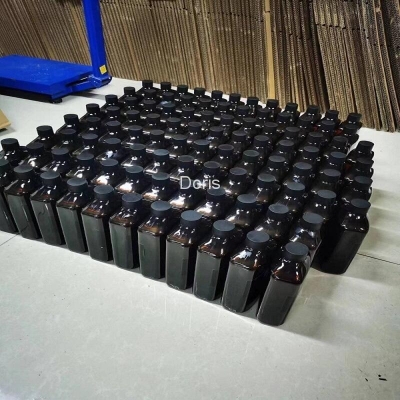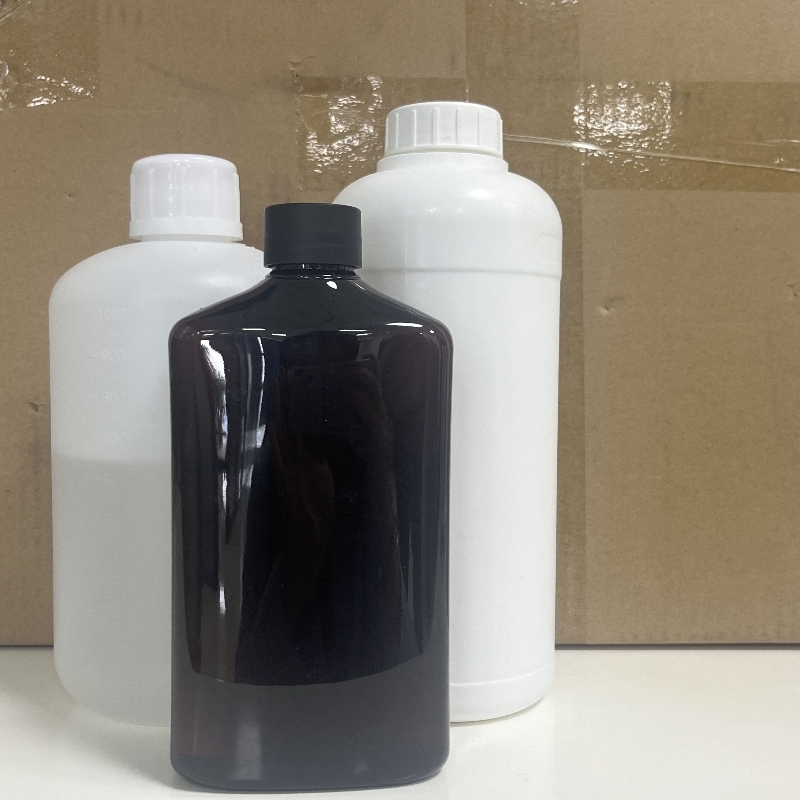Mixing and mixing of liquid-liquid dispersion and miscible liquid
-
Last Update: 2010-03-04
-
Source: Internet
-
Author: User
Search more information of high quality chemicals, good prices and reliable suppliers, visit
www.echemi.com
1 The purpose of liquid-liquid dispersion operation is to increase the phase interface through liquid-liquid dispersion, (2) reduce the diffusion resistance outside the dispersed phase droplets, (3) generate turbulence to promote the homogenization of concentration and temperature, (4) repeatedly break the dispersed phase droplets and coagulate them, so as to promote the mass transfer between the dispersed phase droplets In the process of liquid-liquid dispersion, agitation plays a key role, which controls the coalescence, rupture and suspension of the droplets Agitation affects the strength and direction of liquid flow, and further affects the distribution and uniformity of droplets 2 mixing and mixing of miscible liquid 2.1 mixing of low viscosity liquid and mixing of miscible liquid is a process in which two or more miscible liquids reach uniform concentration, density, temperature and other physical states at any point under the action of mixing It is also called mixing process, which is a basic process of Zui in the mixing process Sometimes in order to emphasize that it belongs to the characteristics of homogeneous stirring Also known as blending or blending The main characteristic of the mixing process of low viscosity miscible liquid is that there is no phase interface in the transfer process For a pure physical mixing process, the mixing of low viscosity miscible liquids is an easy process for Zui However, if the mixing process is accompanied by chemical reaction, it will often complicate the process, mainly in two aspects: first, there are relatively strict requirements on the mixing time to avoid some undesirable side reactions; second, there are mostly reaction heat export or heat import, which increases the control difficulty of the mixing process The mixing operation of low viscosity miscible liquid is generally carried out in turbulent state Therefore, this process has strong main body diffusion, turbulent diffusion and molecular diffusion, and the macro mixing process is accompanied by a strong micro mixing process In order to achieve the uniform mixing state of the stirred liquid, the mixing of low viscosity miscible liquid first requires to provide sufficient circulation, to avoid dead zone in the equipment, so that all the stirred liquid can produce rapid convection circulation movement Secondly, it is also required that the turbulence intensity or shear velocity of the liquid caused by the agitator be large, especially when the viscosity difference between the two liquids is large, the existence of shear will be conducive to the dispersion of high viscosity liquid in the equipment and the enhancement of turbulent diffusion In addition, when the quantity of two kinds of liquid to be mixed is quite different, the feeding position of a small amount of liquid is very important The ideal position is the impeller area, or near the impeller suction port, so as to ensure that the feed can pass through the impeller quickly and promote the mixing liquid to reach the concentration homogenization quickly The main performance indexes of the mixer are mixing time, energy consumption and shear performance The mixing time is an important performance index of Zui 2.1 the application of high viscosity fluid in the mixing and mixing industry is increasing day by day Many polymer are high viscosity fluid, many of them are non-Newtonian fluid In the process of mixing, viscosity will change, so the requirement of agitator is higher Agitator is required to adapt to the change of viscosity to complete the mixing operation Mixing of highly viscous fluids is generally referred to the mixing of mutually soluble high viscosity liquids However, there are many heterogeneous operations in the industry, such as dispersion, solid dissolution, chemical reaction and so on When agitating, it is not difficult to cause turbulence to the low viscosity mutual solution with agitator However, when the viscosity reaches a high level, only laminar flow will occur due to the influence of viscosity In particular, this laminar flow can only appear near the agitator, and the high viscosity liquid slightly away from the blade is still static In this way, it is difficult to cause the circulation flow of liquid in the mixing equipment, that is, there will be dead zone in the equipment, which is very harmful to the mixing, dispersion, heat transfer, reaction and other mixing processes Therefore, the primary problem of high viscosity liquid mixing is to solve the problem of fluid flow and circulation In this case, the circulation flow of the agitator cannot be increased by increasing the stirring speed, because when the viscosity of the fluid is high, the flow discharged from the agitator is very small, and when the speed is too high, a ditch flow will be formed in the high viscosity solution, while the surrounding liquid is still a dead zone A more effective solution is to try to make the agitator push a wider range of fluids Therefore, the ratio of agitator diameter to equipment inner diameter and the ratio of blade width to equipment inner diameter of high viscosity liquid are required to be larger Sometimes, it is also required to increase the number of layers of agitator to increase the mixing range From the perspective of mixing mechanism, when the high viscosity liquid is mixed in laminar flow region, the liquid unit is elongated, thinned or divided by shear subdivision, and gradually reaches mixing with the increase of shear time At the same time, because the shear field in the mixing equipment is not uniform, for example, the gap area between the anchor and the kettle wall of the anchor agitator is a strong shear area, and the mixing rate of the liquid is faster, while the middle area of the kettle is a low shear area, and the mixing rate is slower Therefore, the exchange rate of the liquid in the high shear area and the low shear area or the circulation capacity of the liquid in the kettle are also important factors affecting the mixing In addition, the velocity fluctuation of the fluid in the equipment can also promote mixing In other words, the mixing rate of high viscosity liquid mainly depends on the relative movement rate between the agitator and the surface of the kettle wall and the distance between them Therefore, it is also required to use the agitator for high viscosity liquid The ratio of agitator diameter to equipment inner diameter is quite large In the actual production process, the commonly used viscous fluid agitators include anchor agitator, screw belt agitator, frame agitator, etc The main performance indexes of the mixer are mixing time, mixing energy per unit volume, etc The mixing time is an important performance index of Zui.
This article is an English version of an article which is originally in the Chinese language on echemi.com and is provided for information purposes only.
This website makes no representation or warranty of any kind, either expressed or implied, as to the accuracy, completeness ownership or reliability of
the article or any translations thereof. If you have any concerns or complaints relating to the article, please send an email, providing a detailed
description of the concern or complaint, to
service@echemi.com. A staff member will contact you within 5 working days. Once verified, infringing content
will be removed immediately.







